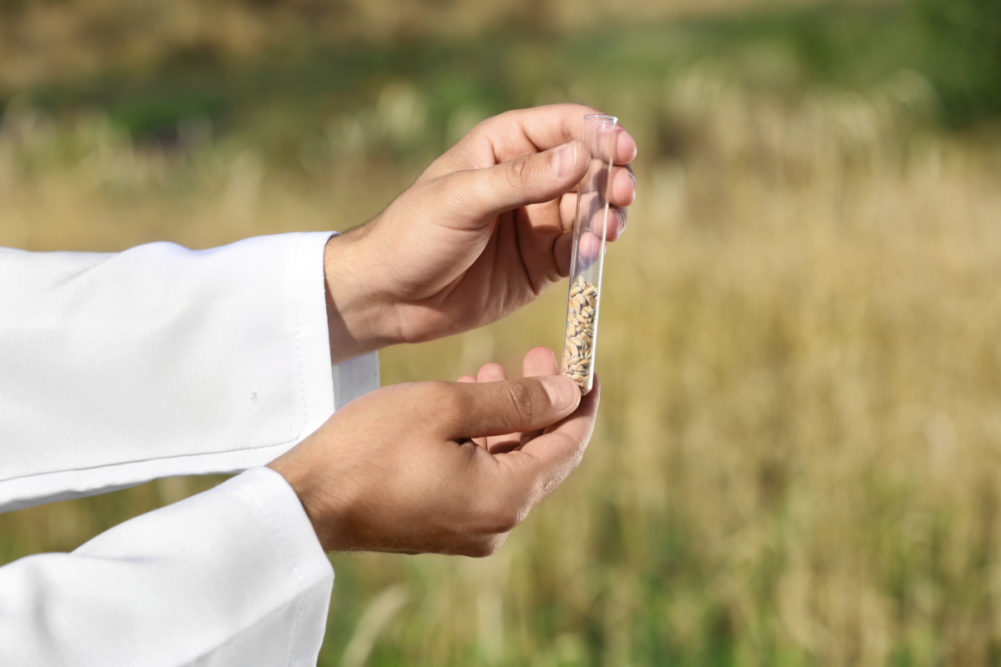PERTH, AUSTRALIA — The Grains Research and Development Corp. (GRDC) on Feb. 27 announced a $12.7 million national research project to support the integration of long coleoptile wheat into Australian farming systems. The announcement was made by GRDC Chairman John Woods at the Grains Research Update in Perth, Western Australia’s premier grains industry forum.
The four-year project will be led by Australia’s national science agency CSIRO along with research parties including the University of Melbourne, NSW Department of Primary Industries, QLD Department of Agriculture and Forestry (QLD DAF), SLR Agriculture, the WA Department of Primary Industries and Regional Development, the University of South Australia and EPAG Research.
The coleoptile is the protective sheath that encloses the emerging shoot and first leaves. The longer the coleoptile is, the greater the emergence potential when deep sowing. Long coleoptile wheats can be sown at depths of more than 10 centimeters, making better use of stored soil moisture.
Woods said long coleoptile wheat could be a “game changer” for growers in low-to-mid rainfall zones, extending options for early sowing to meet the challenges of increasing enterprise sizes and changing climates.
“This project builds on decades of research by CSIRO and previous GRDC investment of approximately $11.5 million to introduce new climate-adaptive traits into commercial wheat varieties,” Woods said. “The significant work to date by Dr. Greg Rebetzke and his team at CSIRO has focused on identifying and sourcing new genes from across the world, and then assessing them in Australia under both laboratory and field conditions. This project addresses identified knowledge gaps around how these genetics perform across contrasting production environments, soils and farming systems, equipping growers with the tools to better respond to changing climates and seasonal variability in their farming systems.”
National trials will explore a range of genetic, environmental and management factors relating to long coleoptile wheat implementation. The project also will include the development of a common industry standard for measuring and defining the categories for wheat coleoptile length.
Rebetzke, lead researcher and CSIRO plant geneticist, said the project was working to mitigate sowing risks for growers and provide greater flexibility around time of sowing.
“Climatic modeling work using on-farm field and usage trials suggests a 20% increase in yields from long coleoptile varieties,” Rebetzke said. “That’s because sowing varieties that have the right fit for a farming system ensures crop growth coincides with climatic conditions to which the crop is best suited.”
Led by SLR Agriculture in the west and QLD DAF in the north, the trials included CSIRO’s breeding lines and long coleoptile wheat lines from commercial breeding companies, which were released for commercial sale for the first time in 2022.
Rowan Maddern, GRDC manager of sustainable cropping systems, said the new project with CSIRO and its partners would build on the previous work undertaken at national and regional levels to deliver a complete agronomic package to growers.
“To fully exploit the genetic potential of long coleoptile wheat we need to understand the relationship between genetic, environmental and management factors and optimize that,” Maddern said. “This project pulls all variables together for seeding depth to give growers an agronomic package that they can pull off the shelf and apply when needed. It will involve significant consultation with industry including fertilizer and chemical companies and commercial breeders. The driving focus of this investment is to build on current work and collaborate with industry as a whole to benefit grain growers.”
The GRDC project integrating long coleoptile wheat into Australian farming systems through an integrated understanding of genetics, management and environment is expected to be completed by the middle of 2026.






